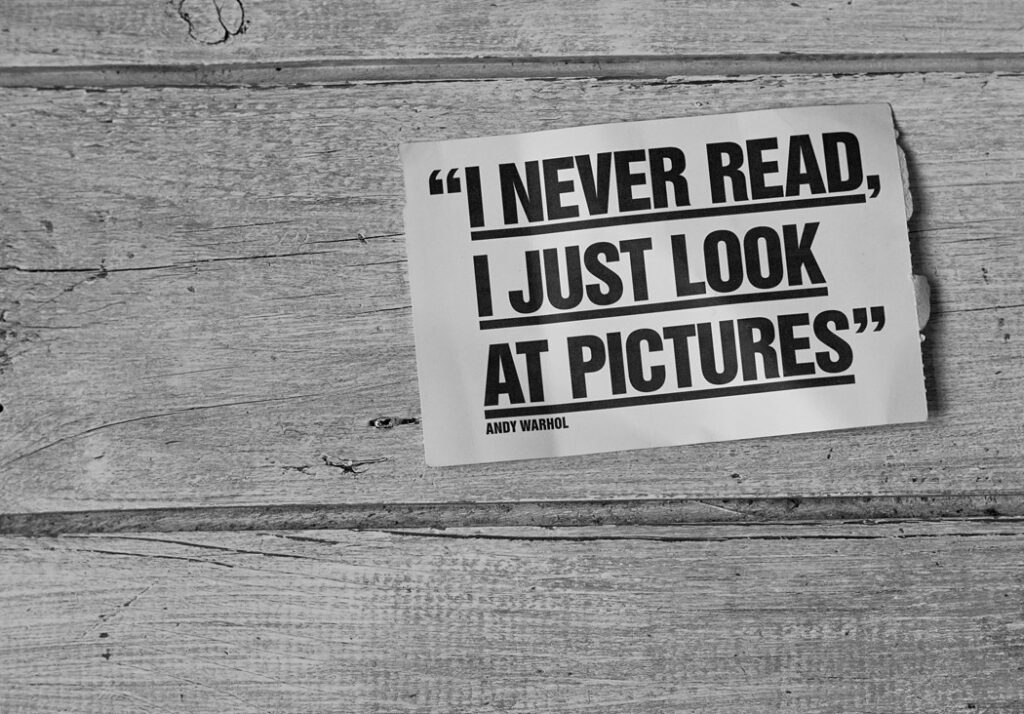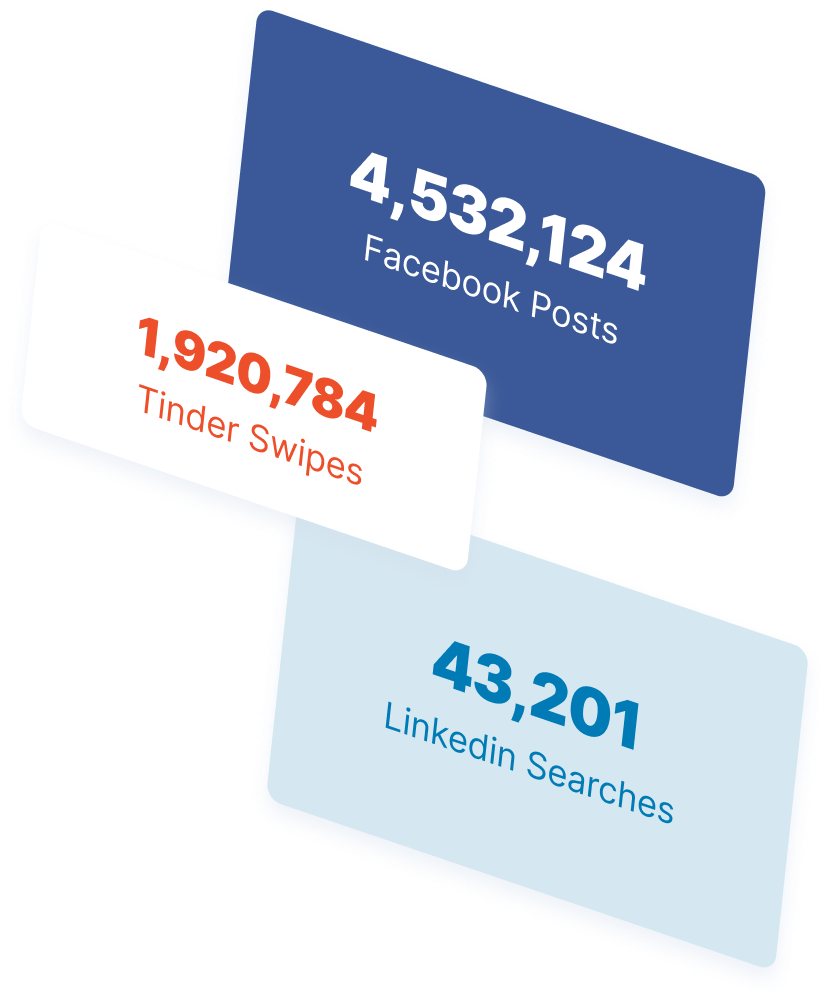-
 9 min. read
9 min. read
-
 Dan Shaffer
Dan Shaffer Director of Marketing Operations
Director of Marketing Operations
- Dan is a marketer for WebFX who likes everything tech, marketing, and startups. Follow him on Twitter @ShafferDan. @ShafferDan
Every single morning I like to read a little bit with my breakfast. Usually I whip out my iPhone and start scrolling through my Twitter feed, Reddit, or some other news aggregators. Sometimes I will occasionally take a glance at the front page of the newspaper that lays on the kitchen table five feet away from my cereal bowl.
In reality, I’m not reading all the content of each news article that I come across. I’m not clicking on every link I see on my phone, and just because I follow someone on Twitter doesn’t mean I have read their blog posts. So what am I looking for?
In the 10 minutes it takes me to devour my breakfast before work, I have already skimmed across numerous headlines and hundreds of advertisements (consciously and subconsciously).
I need something that catches my eye, gets my attention, spikes my curiosity and raises my eyebrows before I actually click on it and read what it has to say. Most times, I long for that interesting headline enough that I won’t stop looking until I find it.
When each of your readers is following hundreds, or thousands, of other Twitter accounts, you need your tweets to stand out and get their attention in the split second it takes to read a headline. This is why headlines are so important.
This is what will draw your readers in to actually see what you have written. If your headline isn’t compelling enough, it won’t matter what your article has to say. No one will ever see it.
The headline will greatly influence your website traffic, bounce rates, conversions and trust.
Millions of new blog posts, billions of new emails and thousands of hours of videos are uploaded online each day. However, only 20% of the people who see these new content pieces will make it past the headline. 80% will read the headline and move on.
Your headline is a first impression that can greatly determine the success of your articles, your website, and even your online business. (source) So knowing how to write great headlines is critical.
Attracting a reader
Research has shown over the years what kinds of things subliminally attract people to different things. Below are some ways you can easily draw attention to your headline and your article simply by phrasing the headline a certain way.
Lists and numbers
People love to look at lists and see numbers.
A list of facts or things will draw attention to viewers as they are easily viewed and scannable. Numbers stand out in a line of text as well, drawing the attention to the headline overall.
“Ways to Eat Healthy While Traveling”
– The use of the word “ways” implies a list that can be easily read over.
“10 of the Most Effective Air Fresheners”
– The number at the beginning of the headline draws your attention right away.
“27 Things to do This Summer”
– Try implementing both in one headline to fully spike one’s interest in your article:
Be clear
Depending on how you phrase your headline or what you include within it can determine the click-through rate of a headline link. Be explicit by saying exactly what is included in the article.
Which headline is clearer?
“Saving on Your Phone Bill”
or
“10 Ways to Save Money on Your Smartphone Bill”
“How to Save on Your Phone Bill”
– This doesn’t provide any specifics at all.
A headline like this shows uncertainty.
Some questions that you might ask about this article might be:
- What am I saving – Money? Minutes? Data?
- Which phone – My home phone? Cellphone?
A reader might click on this to see what it is all about, but when they finally realize what it is they will quickly leave. This will only increase bounce rates and decrease quality visitors.
“10 Ways to Save Money on Your Smartphone Bill”
– You know exactly what to expect in this article just based on the headline. It isn’t my home phone and it isn’t just a cellphone.
There is no question as to what this article is about.
Avoid ambiguity and be as clear as possible.
Address your reader
Explicitly addressing your reader as “You” or by their title, or by job can spike interest as well. This is getting their attention by directly calling them out or relating to that individual.
“How You Can Earn Money on the Weekend.”
– How I can earn money on the weekend? Me?
Yes, you.
“5 Thoughts to make You a Better Salesperson.”
– This addresses both you and the salesperson. Either one will be drawn to this headline.
Searchable headline
When writing headlines for the web, your headline should be search-friendly. Be sure you have included the proper keywords within the headline in order to maintain an SEO-optimized article.
This will ensure your article will be clicked on among other results within search engines. Long-tail keywords will do even better as higher-quality visitors will likely click on your headline.
Ensuring that the headline is SEO-friendly is very important. As the headlines are optimized according to the tips in this article, the article will also stand out among others within a search results page.
However, getting your article to show up on those search results comes first. After your headline is optimized for long-tail keywords and it has elements mentioned above, the article will most likely have higher click-through rates among search engines.
Which are you more likely to click on in a Google search for homemade ice cream recipes?
“Ice Cream Recipes”
or
“21 Best Recipes for Homemade Ice Cream”
What is the incentive?
Another very important element of writing great headlines is the incentive. Why should they read this?
Entice people by giving readers an incentive for actually viewing the article. Expressing different facts to show that your article possesses something the reader wants to attain is key to getting them to read your article.
Express usefulness
Show that the readers will be rewarded with some kind of useful information after they have read the article. This works particularly well with tutorials or how-tos.
Express how something will be useful to the reader in one sentence. Here is an example:
“How to Make a Customized Google Map”
This is perfect. I already know that by the time I’m done reading this, I should know how to make a customized Google Map.
Lifehacker also does a good job of this on their Facebook and Twitter feeds.
Generally, they start with a sentence or question and finish with, “Here’s how…”
AT&T is tracking and selling a bunch of your information. Here’s how to opt out: http://t.co/UAG2r9ioRM — Lifehacker (@lifehacker) July 8, 2013
Share knowledge
This type of headline expresses the fact that the reader will have gained knowledge about something within the article. A news channel might take advantage of this or even a magazine tabloid.
The reader wants to know something that other people may not know so they can share it with others. Additionally, the reader’s interest might be sparked by a small fact within the headline that creates a desire to know more and read the article.
“Apple Applies for iWatch Trademark in Japan”
– This is a simple fact, but people will want to know more of the details.
Another way to show this incentive is by letting readers in on a secret or sharing something unbelievable.
“5 Secrets Behind a Good Night’s Sleep”
– Sharing a secret might be more of a tip or trick but it is still information the reader is interested in knowing.
“15 images You Won’t Believe Aren’t Photoshopped”
– I need to see what these are! This headline sparks an extreme amount of curiosity without being vague.
Offer a reward
Give the visitor a reason to view the article.
A headline that tells them the reward they can receive will spark interest in the article. This reward might be something as simple as a good laugh, or it might even be an actual product or service.
“Who Wants a Free Responsive WordPress Theme?”
– Anyone interested in WordPress themes would be highly interested in clicking on this headline. Although, they are expecting a free theme in doing so as well, so be sure you follow through.
“Dilbert Cartoons for Sales and Marketing”
– This headline would interest marketers or salespeople as they expect to get a good chuckle out of some relevant Dilbert clippings.
Headlines in social media
This is where you are going to see a lot of your headlines, so why not tailor them to each network that you share on?
Twitter only has 140 characters to work with.
However, that is plenty enough to use the power of the headline techniques mentioned above. Although, with Twitter, there are some actionable words that tend to do better than others. The folks at Buffer found that a tweet asking for a retweet increased its retweets by an average of 311%!!
They also found an entire list of the most retweetable words on Twitter. Try to incorporate some of these Twitter tips in your next tweet!
Facebook compared to Twitter has an unfair advantage. Facebook can use images.
So can Pinterest, Tumblr, Instagram, and just about every other social media platform. This is huge. You have the opportunity to put the entire meaning of your article within the image instead of the headline.
The image itself becomes that first impression and takes the pressure off of your headlines. Take advantage of this useful tool! Use extremely self-explanatory images that allow your readers to know exactly what they will read about in the article all while creating that curiosity to drive them to keep on reading.
Try out your different headlines and posts on social media and test out which method works the best. Use an app like Buffer to get valuable statistics on your social media activity. Perform A/B testing to see which style of headline will attract the most readers from your list of followers.
It might take a little experimentation, but in time, you will be a master of the headlines on all your social accounts! 
Headlines dig deep into the psychological depths of our brains and have a subliminal effect as we quickly glance over them. Be sure you are writing great headlines to get the right viewers to your site.
Not all readers are the same and each website has a different audience. Feel free to try out a new method here and there. Find out which element or incentive sparks the most interest in your readers.
You might be surprised to see the difference it makes!
-
 Dan is a marketer for WebFX who likes everything tech, marketing, and startups. Follow him on Twitter @ShafferDan.@ShafferDan
Dan is a marketer for WebFX who likes everything tech, marketing, and startups. Follow him on Twitter @ShafferDan.@ShafferDan -

WebFX is a full-service marketing agency with 1,100+ client reviews and a 4.9-star rating on Clutch! Find out how our expert team and revenue-accelerating tech can drive results for you! Learn more
The Internet in Real Time
Ever wonder how much is going on at once on the Internet? It can be tough to wrap your mind around it, but we’ve put together a nice visual that’ll help! The numbers show no sign of slowing down either.
Find out More

Ready to Drive Results for Your Business?
See how WebFX uses SEO, PPC, Social Media, and Web Design to Drive Revenue for Businesses.
Get InspiredThe Internet in Real Time
Ever wonder how much is going on at once on the Internet? It can be tough to wrap your mind around it, but we’ve put together a nice visual that’ll help! The numbers show no sign of slowing down either.
Find out More





